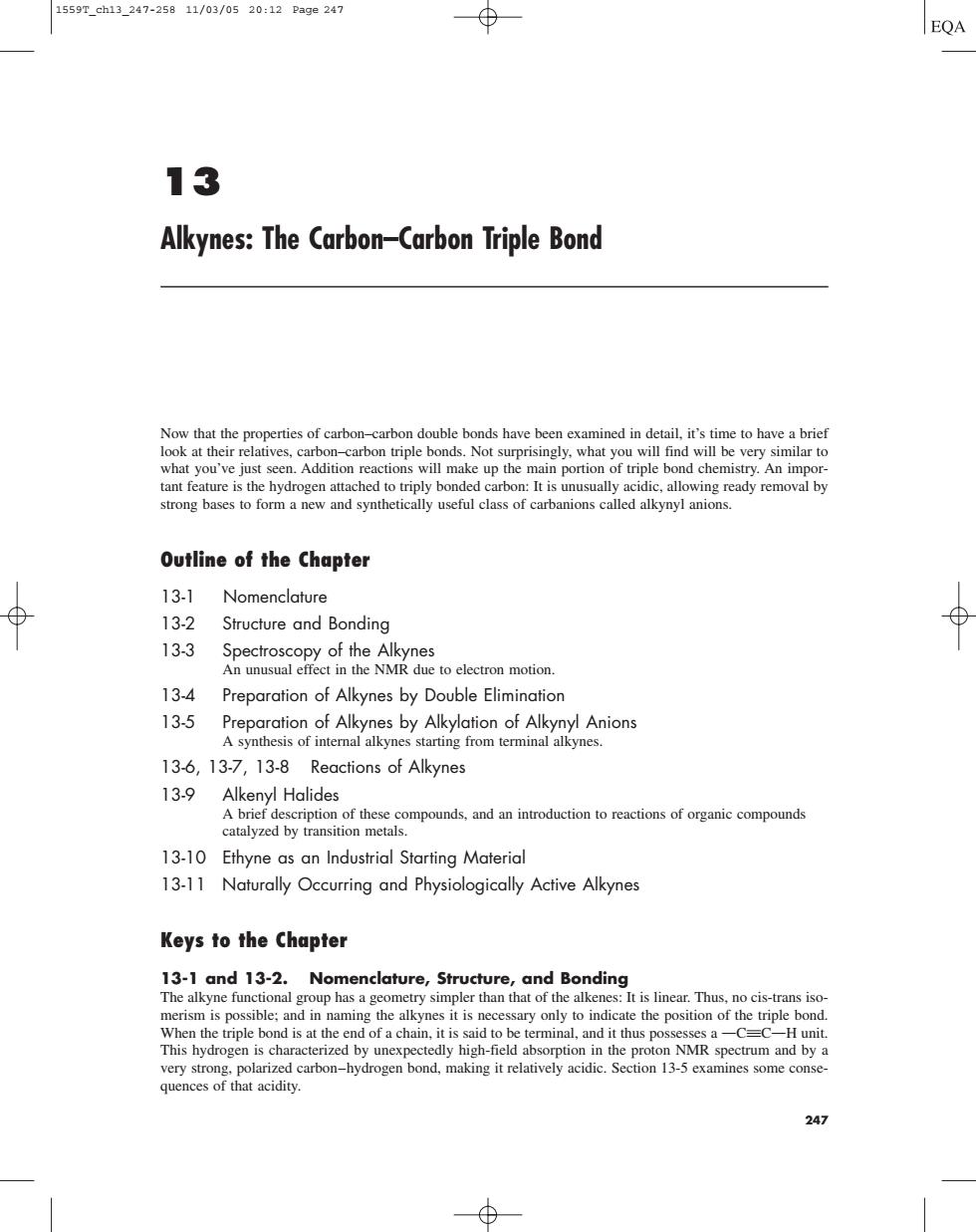正在加载图片...

15597ch13247-25911/03/0520:12Page247 EQA 13 Alkynes:The Carbon-Carbon Triple Bond what you've just seen.Addition tant feat Outline of the Chapter 13-1 Nomenclature 风 13-2 Structure and Bonding 133 Secroaie2gatekneoermmim 13-4 Preparation of Alkynes by Double Elimination 13-5 Preparation of Alkynes by Alkylation of Alkynyl Anions A synthesis of intemal alkynes starting from terminal alkynes. 13-6,13-7,13-8 Reactions of Alkynes 13-9 Alkenyl Halides 众物dp 13-10 Ethyne as an Industrial Starting Material 13-11 Naturally Occurring and Physiologically Active Alkynes Keys to the Chapter 13-1and13-2 d Bo ding erminal,and it thus posse H unit very str by unexpec5w防and b quences of that acidity. 24713 Alkynes: The Carbon–Carbon Triple Bond Now that the properties of carbon–carbon double bonds have been examined in detail, it’s time to have a brief look at their relatives, carbon–carbon triple bonds. Not surprisingly, what you will find will be very similar to what you’ve just seen. Addition reactions will make up the main portion of triple bond chemistry. An important feature is the hydrogen attached to triply bonded carbon: It is unusually acidic, allowing ready removal by strong bases to form a new and synthetically useful class of carbanions called alkynyl anions. Outline of the Chapter 13-1 Nomenclature 13-2 Structure and Bonding 13-3 Spectroscopy of the Alkynes An unusual effect in the NMR due to electron motion. 13-4 Preparation of Alkynes by Double Elimination 13-5 Preparation of Alkynes by Alkylation of Alkynyl Anions A synthesis of internal alkynes starting from terminal alkynes. 13-6, 13-7, 13-8 Reactions of Alkynes 13-9 Alkenyl Halides A brief description of these compounds, and an introduction to reactions of organic compounds catalyzed by transition metals. 13-10 Ethyne as an Industrial Starting Material 13-11 Naturally Occurring and Physiologically Active Alkynes Keys to the Chapter 13-1 and 13-2. Nomenclature, Structure, and Bonding The alkyne functional group has a geometry simpler than that of the alkenes: It is linear. Thus, no cis-trans isomerism is possible; and in naming the alkynes it is necessary only to indicate the position of the triple bond. When the triple bond is at the end of a chain, it is said to be terminal, and it thus possesses a OCqCOH unit. This hydrogen is characterized by unexpectedly high-field absorption in the proton NMR spectrum and by a very strong, polarized carbon–hydrogen bond, making it relatively acidic. Section 13-5 examines some consequences of that acidity. 247 1559T_ch13_247-258 11/03/05 20:12 Page 247